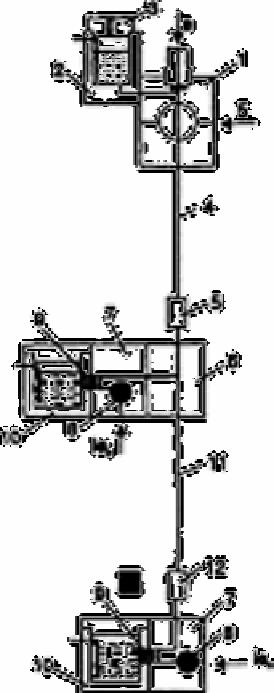Chemistry Reference
In-Depth Information
shown in Fig. 14.1. A 0.85mm id capillary tube made of fluorinated ethylene propylene
copolymer was used in the pre-separation (first) stage and a capillary tube of 0.30mm id
made of the same material served for the separation in the second stage. Both tubes were
provided with conductivity detection cells [48] and an ac conductivity mode of detection
[44] was used for making the separations visible. The driving current was supplied by a
unit enabling independent currents to be pre-selected for the preseparation and final
analytical stages. The run of the analyser was controlled by a programmable timing and
control unit. The zone lengths from the conductivity detector, evaluated electronically,
were printed on a line printer.
Fig. 14.1
Separation unit in a column coupling configuration as used for the
analysis of anions in river water: 1, sampling block with a 30µL
sampling valve; 2, terminating electrolyte compartment with a cap
(3); 4, 0.85mm id capillary tube (pre-separation column); 5 and 12,
conductivity detectors; 6, bifurcation block; 7, refilling block with
needle valve (8); 9, mechanically supported membranes; 10, leading
electrolyte compartments; 11, 0.30mm id capillary tube; s, positions

Search WWH ::

Custom Search